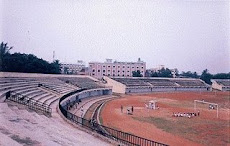 |
| River Rushikulya near Tara-Tarini Hill Shrine |
Heavy siltation
of the Rushikulya river has led to increased conductivity of the water and the
river bed has risen up to the land level making it unfit for consumption and
even cultivation. Around 60 per cent of arable land in Ganjam district receives
water from this river. According to a report by Central Pollution Control Board
(CPCB), the ability to conduct electricity (conductivity) of Rushikulya is 20
times more than the ideal 2,250 micro mhos/cm, which is highest in the State.
The high electrical conductivity may adversely affect the yield per hectare in
the district. The river is considered lifeline of the farmers in Ganjam. The
river’s mean conductivity has been estimated 10 times higher at over 20,786
micro mhos/cm and is among the few in the country to exhibit such conductivity.
The CPCB report states that high conductivity would increase the corrosive
characteristic of the water, hence it would become unfit for use. Experts of Orissa
University of Agriculture and Technology stated that concentration of dissolved
salts in the water increases the conductivity. They said dissolution of salts
would either be through groundwater or inflow of surface water into the river. Conductivity
not only affects the harvest but also the quality of the soil. Worse still,
water availability for the crop would reduce greatly. This would be
catastrophic for the district that has around 80 per cent of its cultivated
area under irrigation during kharif season. Surface water has been the mainstay
of irrigation in the district. “Except for a patch work, no steps were taken to
renovate the riverbed. The water is unfit for drinking and irrigating,” alleged
social scientist Chitaranjan Dash. He urged the Government to take steps to
reduce the conductivity and called for research on the effect on humans if they
consumed this water.
Source: New Indian Express

















.jpg)


















































No comments:
Post a Comment